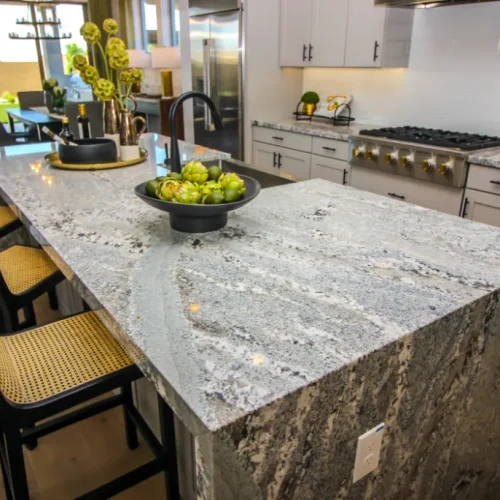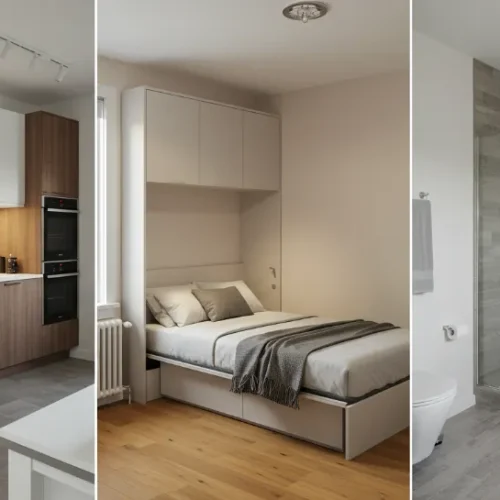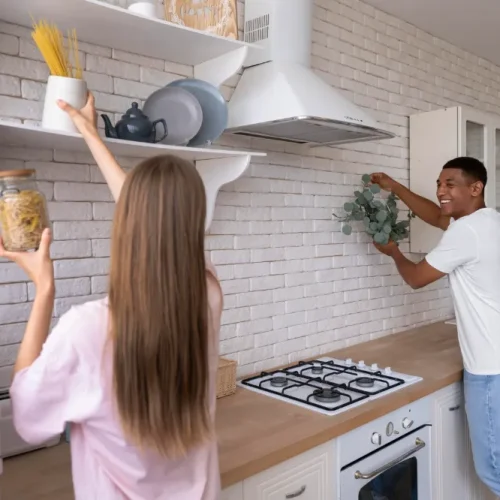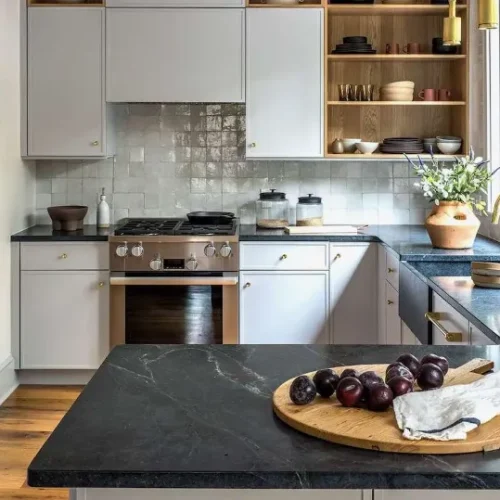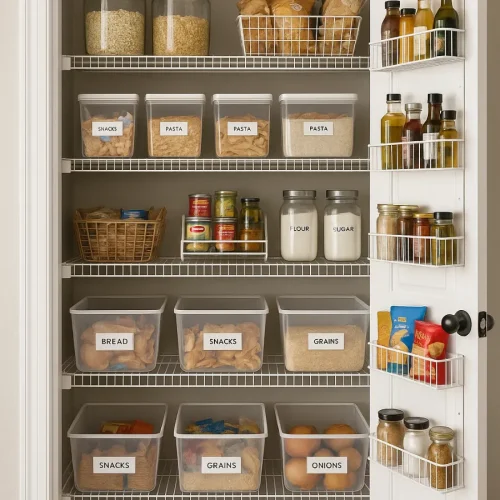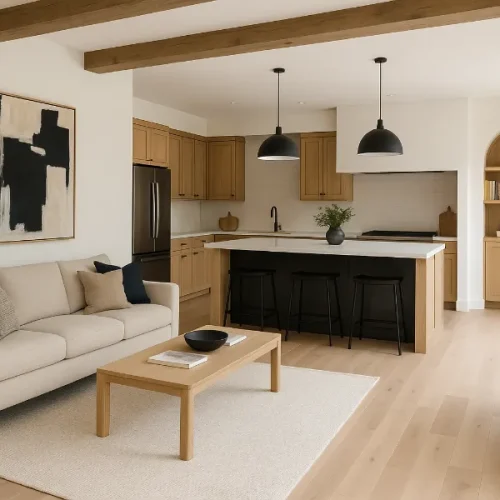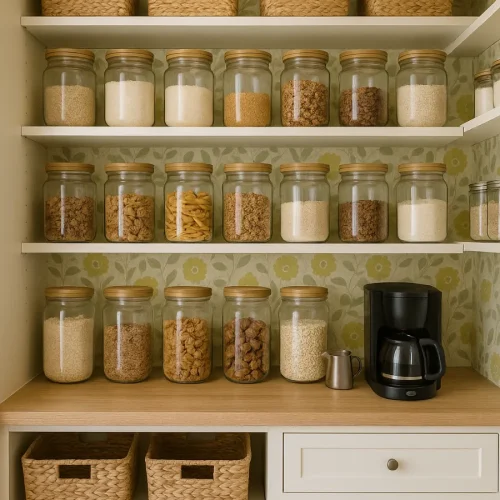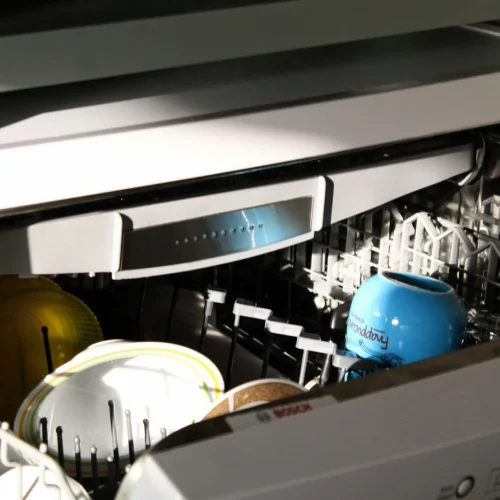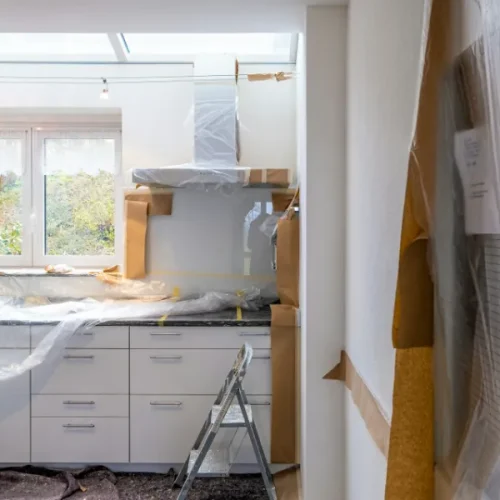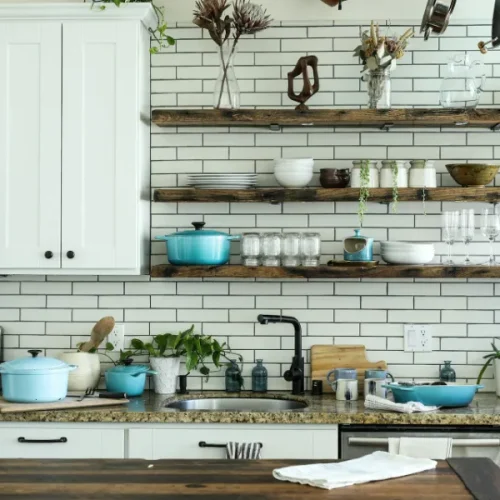There’s a reason you keep seeing mixed metals in kitchen designs splashed across design magazines, Pinterest boards, and Instagram feeds. The days of sticking to just brushed nickel or chrome in every corner are long gone. Today, designers and homeowners alike are embracing the layered look of brass, nickel, black, and even copper in the same space. And when done right, it creates depth, warmth, and personality that a single finish just can’t achieve.
But here’s the catch: mixing metals isn’t about grabbing three random finishes and hoping they work. There’s a method to the madness. So if you’re planning a kitchen remodel, refreshing your hardware, or simply wondering whether that brass faucet will clash with your stainless steel appliances, this guide is for you.
Let’s break down the benefits, the rules, and the creative freedom of mixing metals in your kitchen.
Can You Mix Metal Finishes in a Kitchen?
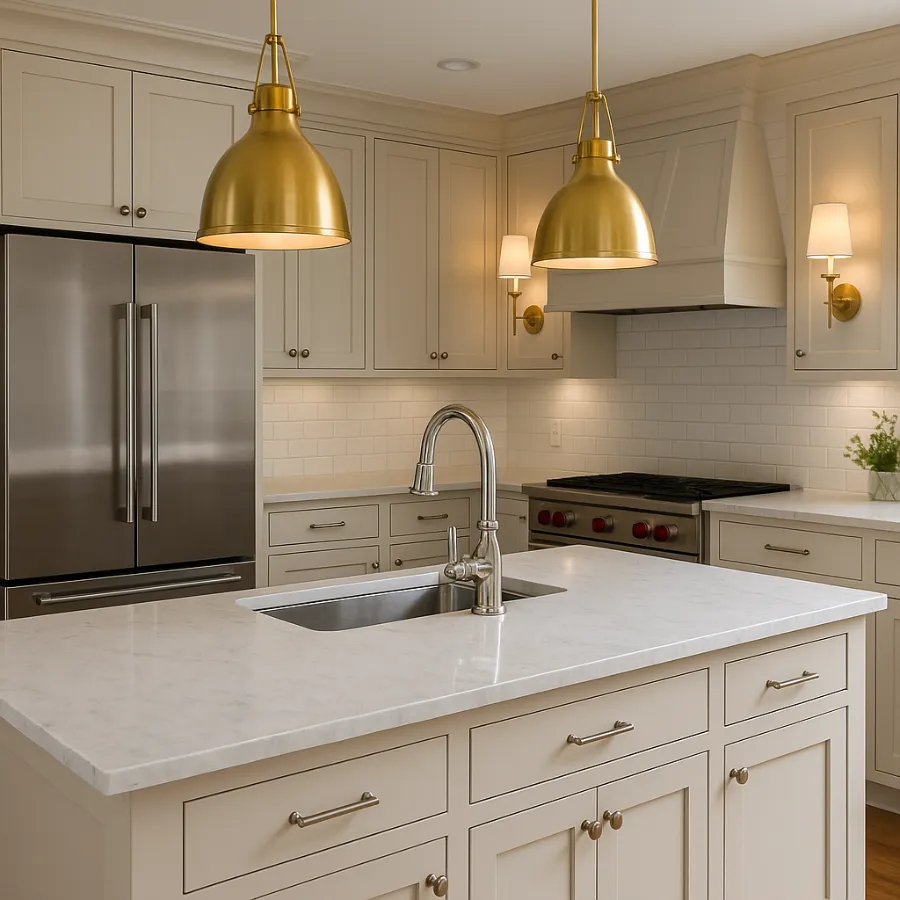
Yes — and not only is it allowed, it’s one of the biggest design trends of 2025. For decades, kitchens leaned heavily into one “safe” finish. Think brushed nickel everywhere in the ’90s and 2000s. While cohesive, those kitchens often looked flat or overly sterile.
Fast-forward to today, and homeowners want kitchens that feel collected, intentional, and layered. That’s where mixed metals in kitchen design comes in. Using two or three finishes adds instant depth. A brass pendant light paired with polished nickel pulls, for example, creates subtle contrast and makes each element stand out.
Benefits of Mixing Metals in a Kitchen
Why risk the mix? Here are the top reasons designers swear by it:
- Adds Depth and Character – A mix of metals avoids that “builder-basic” look. Instead, it gives your kitchen personality and visual texture.
- Softens the Sterility of a Single Finish – Too much chrome or nickel can feel cold. Introducing brass or bronze warms it up instantly.
- Makes a Kitchen Feel Collected Over Time – Rather than looking like it came straight out of a showroom, your kitchen feels curated and lived-in.
- Offers Flexibility with Trends – Love brass but afraid of committing? Add it in accents like lighting or pulls while keeping timeless nickel for faucets.
- Simplifies Shopping – Not every finish matches across manufacturers. Mixing metals frees you from obsessively matching cabinet knobs to your faucet.
Best Mixed Metal Combinations for Kitchens
Not all pairings are created equal. Some blends feel timeless, while others can clash. Here are tried-and-true combos to inspire you:
- Polished Nickel + Antique Brass – A timeless duo with warm undertones that balance each other beautifully.
- Matte Black + Chrome – Modern and sleek, with just the right amount of contrast.
- Oil-Rubbed Bronze + Unlacquered Brass – Perfect for farmhouse and rustic kitchens.
- Polished Nickel + Matte Black + Brass – A layered trio designers love because each tone plays a distinct role without overwhelming the space.
- Stainless Steel + Brass – Works especially well when stainless appliances are part of the mix.
How to Mix Metals Like a Pro
Here’s where most homeowners get nervous: execution. These strategies will keep your mixed metals in kitchen design looking intentional rather than chaotic.
Establish a Dominant and Secondary Finish
Every kitchen needs a leader. Choose one finish to make up about 60–70% of your space — often for faucets, cabinet hardware, or major lighting. Then, add one or two secondary finishes as accents.
Example: Nickel faucets and cabinet pulls as dominant, with brass pendants and black door hardware as accents.
Limit the Number of Metals
The magic number is usually two or three. Small kitchens should stick to two finishes, while larger kitchens can get away with three. Any more, and you risk a cluttered, mismatched look.
Balance Warm and Cool Tones
Gold, brass, and copper bring warmth. Nickel, chrome, and stainless steel lean cool. Black is neutral and works with almost anything. Pairing a warm metal with a cool one creates contrast that feels intentional.
Play With Finishes
It’s not just about color — sheen matters. Mix polished with matte or brushed finishes to add texture. A polished nickel faucet paired with matte black pulls, for example, feels balanced rather than flashy.
Distribute Metals Evenly
Avoid clumping one finish all in one corner. Spread them throughout the kitchen for cohesion. Think brass pendants over the island, nickel faucet at the sink, and black accents on door hardware.
Common Mistakes to Avoid When Mixing Metals in Kitchen
Even though mixing metals is flexible, there are pitfalls to steer clear of:
- Mixing Too Many Finishes – More than three creates visual chaos.
- Ignoring Appliances – Stainless steel counts as a finish. Don’t forget it in your overall mix.
- Combining Metals Too Similar in Tone – Nickel and chrome, for instance, are often too close to create contrast. Add brass or black to balance them out.
- Overusing High-Polish Finishes – Too much shine can feel dated or overwhelming. Balance with matte or satin.
- Forgetting the Bigger Picture – Cabinet color, countertop material, and flooring all affect how metals interact. Always test samples together before committing.
Inspiration: Designer-Approved Mixed Metal Kitchens
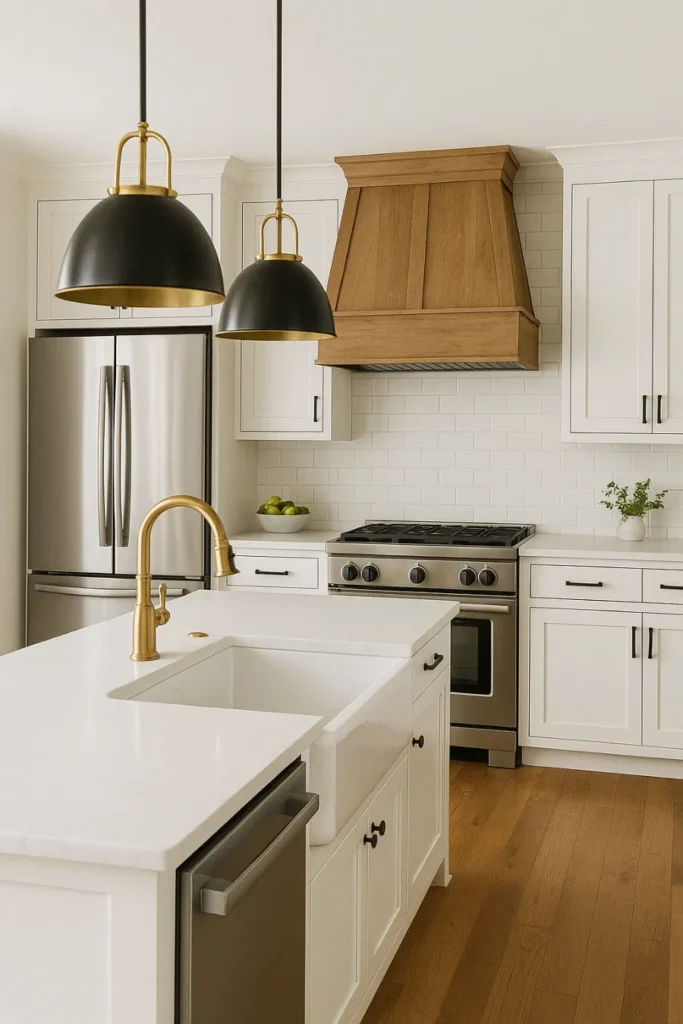
Here are a few design approaches that show just how versatile mixed metals in kitchen design can be:
- Modern Farmhouse – White cabinets with matte black pulls, brass lighting, and stainless steel appliances.
- Coastal Chic – Polished nickel faucets, brass sconces, and unlacquered brass pulls on pale cabinetry.
- Classic Elegance – Polished nickel hardware, antique brass pendants, and marble countertops.
- Contemporary Minimalist – Matte black lighting, chrome faucet, and brass accents for warmth.
FAQs About Mixing Metals in a Kitchen
Should cabinet hardware match the faucet?
Not anymore! While it used to be standard, today designers encourage mixing. Repeating the faucet finish elsewhere — like in lighting — helps tie it together.
Are stainless steel appliances considered a finish?
Yes. Treat them as one of your finishes, especially if they’re a large visual element. If you have stainless, stick to two additional metals.
Can you mix brass and chrome?
Absolutely. The contrast is bold but stylish, especially if balanced with a third, grounding finish like matte black.
Is brushed nickel out of style?
No. Brushed nickel remains a classic and budget-friendly option. It may not be “trending,” but it’s timeless.
Conclusion: Creating a Timeless Kitchen with Mixed Metals
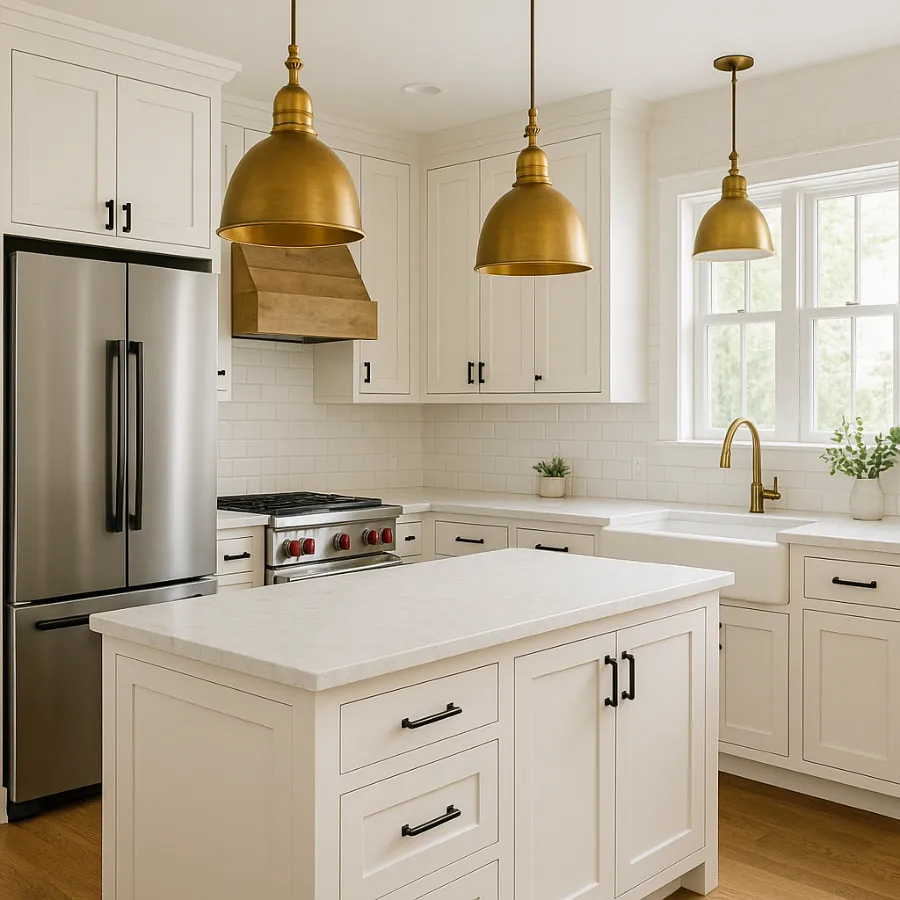
Mixing metals in your kitchen doesn’t have to be intimidating. When done thoughtfully, it’s one of the easiest ways to add depth, character, and a designer touch to your home. Stick to a dominant finish, bring in one or two accents, balance warm and cool tones, and avoid going overboard.
The beauty of mixed metals in kitchen design is that it evolves with you. Swap out cabinet pulls, update lighting, or bring in a new faucet down the line. The possibilities are endless, and your kitchen will always feel fresh, intentional, and uniquely yours.



